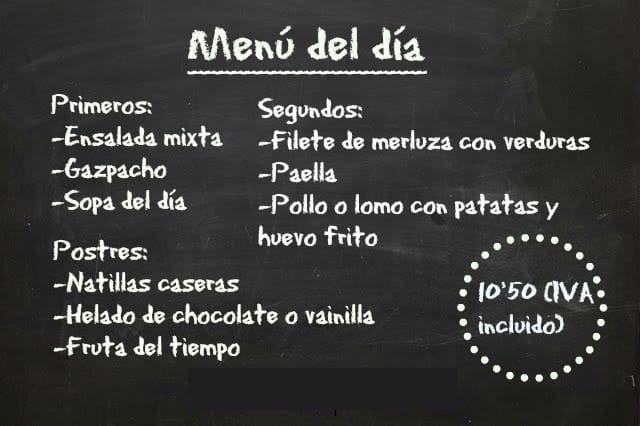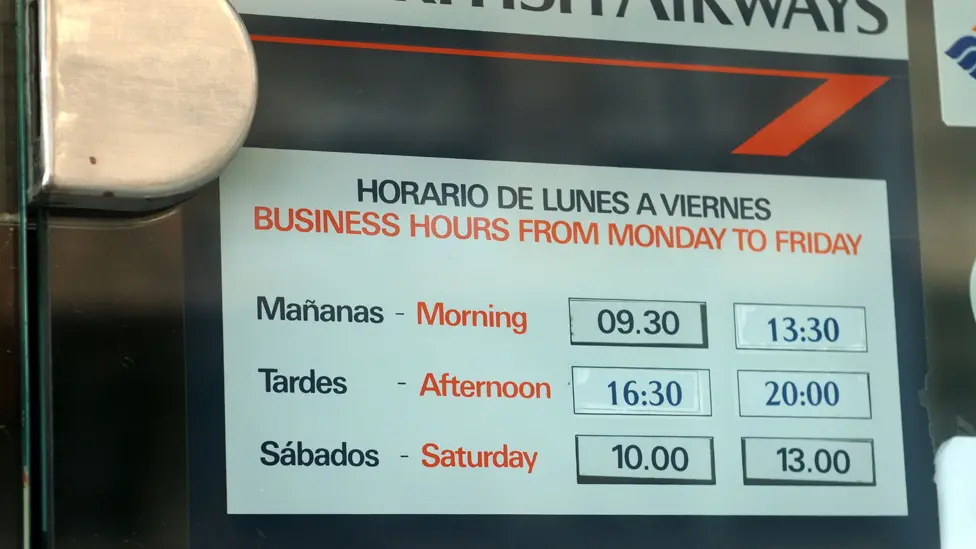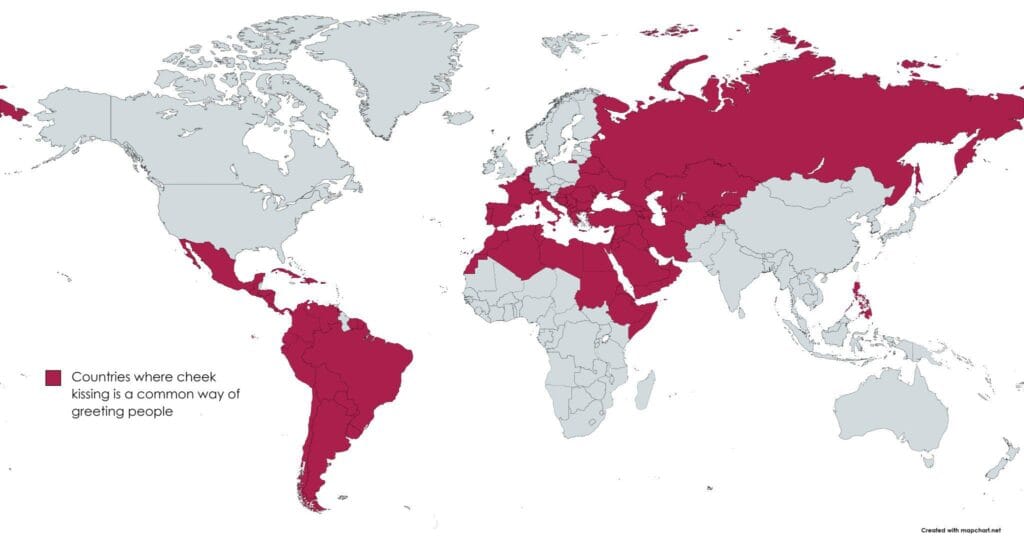Cultural Shocks for Americans in Spain
Moving from the USA to Spain is a fantastic adventure, but it comes with a set of hilarious “wait, what?” moments. Here are some of the main cultural shocks when moving from the USA to Spain:
The Schedule is a Suggestion, Especially Dinner
- The Shock: You’re ready for dinner at 6:00 PM. You head out and find… nothing. Restaurants are closed, the cooks are napping, and the only people eating are toddlers. A “normal” dinner time starts at 9:00 PM or later. A 10:30 PM dinner on a Tuesday is completely standard.
- The Funny Thought: You’ll start wondering if your watch is broken. You’ll have a profound existential crisis: “Am I a toddler? Is my life just one big, early bedtime?” Meanwhile, Spanish grandparents are just starting their first vermut as you’re considering putting on your pajamas.
- The Schedule of Meals: Your internal clock will be shattered.
- Breakfast (El Desayuno): Forget your lumberjack-sized American breakfast. Spanish breakfast is a light, quick affair, mostly a coffee and maybe some toast.
- Lunch: You’ll feel like you’ve eaten a garnish until lunch (the main meal) hits at 2:00 PM or 3:00 PM.
- Dinner (La Cena): This is the biggest shock. Dinner starts at 9:00 PM or 10:00 PM. If you show up at a Spanish restaurant at 6:00 PM, the staff will assume you’re looking for an afternoon snack, or perhaps just asking for directions to an actual dinner establishment.

The “Menú del Día”: Many restaurants offer a affordable fixed-price lunch menu (menú del día) during these hours, which is a cornerstone of Spanish life.
Shopping Hours: The Siesta is Real
- The Shock: You need milk at 2:30 PM? Too bad. The entire town shuts down from about 2:00 PM to 5:00 PM for the sacred siesta. This isn’t just a nap; it’s a mandated pause button on life. Small shops close, and the streets go quiet.
- The Funny Thought: Your initial panic of “How does anything get done?!” will melt into pure admiration. You’ll learn that a society that prioritizes a long lunch and a break over 24/7 convenience might be onto something. You’ll also become a master planner, because forgetting toilet paper during siesta hours is a true crisis.

The Closed Sign: While the actual nap (siesta) is less common in big cities, the business closures are very real. From roughly 2:00 PM to 5:00 PM, expect many small, local shops to simply close.
You need to buy something essential? Too bad. They’re on break. Your American efficiency will be powerless against the Spanish need for a long midday meal and a coffee.
Personal Space is a Foreign Concept
- The Shock: That comfortable two-foot bubble you carry around in the USA? Popped. In lines, at bars, in conversations, people stand closer. It’s not aggressive; it’s just warm and engaged.
- The Funny Thought: You’ll take a step back, and they’ll take a step forward. It will feel like a slow, friendly dance everywhere you go. You’ll eventually stop retreating and realize it’s actually quite nice not to have to shout to be heard.

The “Dos Besos” (Two Kisses): Upon introduction to nearly anyone who isn’t a business client (and often even then), you will be greeted with two cheek kisses (right cheek, then left cheek).
Your first move will look like an awkward chicken trying to escape a hug. By the end of the year, you’ll be pouting if a cashier doesn’t call you cariño (sweetheart).
The Noise Level: From “Indoor Voices” to “Joyful Decibels”
- The Shock: Americans are often taught to use “indoor voices.” Spaniards use “life-is-short-let’s-enjoy-it voices.” A quiet café conversation can sound like a lively political debate. A family dinner is a beautiful, chaotic symphony of overlapping conversations.
- The Funny Thought: For the first few weeks, you’ll constantly lean in and ask, “Is everything okay? They sound angry.” You’ll soon realize they’re just passionately discussing the best way to cook potatoes.
- Volume Control: Spaniards are loud. When you see a group of people passionately discussing something with waving arms, you’ll think they’re having an argument that’s about to turn into a duel. They are not. They are simply asking each other what they want for tapas.
The Green Grocery Aisle is… the Entire Town
- The Shock: The “supermarket” is for non-perishables. For real food, you go to specialized shops: the frutería (fruit/veg), the panadería (bread), the carnicería (meat), the pescadería (fish). You’ll shop more frequently and buy less.
- The Funny Thought: You’ll feel like a TV chef, gathering your ingredients from the local artisans. Your biggest daily decision will be which bakery to get your bread from today. It turns grocery shopping from a chore into a social event.
Spanish Daily Timetable
A classic Spanish daily rhythm: Here is a breakdown of that ordinary timetable, showing how the famous “jornada partida” (split shift) and “jornada continua” structures the day for different groups.
| Time | Civil Servant/Bank Employees (8:00 – 3:00) Jornada Continua | Other Office/Shop Worker (9:00 – 2:00 & 5:00 – 7:00) Jornada Partida | General Population / Notes |
|---|---|---|---|
| 8:00 AM | Work starts. | Waking up / commuting. | Light breakfast (coffee, toast). |
| 9:00 AM | At work. | Work starts. | Cities are fully active. |
| 11:00 AM | Coffee break (almuerzo). | Coffee break (almuerzo). | A short pause for a snack and coffee. |
| 2:00 PM | Final hour of work. | Morning work ends. | Shops and offices start to close. |
| 3:00 PM | Work ends for the day. | ||
| 2:30 PM – 5:00 PM | LUNCH & SIESTA TIME | LUNCH & SIESTA TIME | The main meal of the day. Time for family, a nap, or errands. |
| 5:00 PM | Free time (gym, errands). | Return to work. | Afternoon shift begins. |
| 7:00 PM | Free time continues. | Work ends for the day. | |
| 7:00 PM – 9:00 PM | Free time: evening stroll (paseo), drinks with friends (aperitivo), shopping. | Free time: evening stroll (paseo), drinks with friends (aperitivo), shopping. | This is the classic time for socializing. |
| 9:00 PM – 10:00 PM | DINNER TIME | DINNER TIME | Dinner is a lighter, social meal. |
| 10:30 PM+ | Social time continues or wind down. | Social time continues or wind down. | It’s common for TV prime time to start around 10:30 PM. |
Important Cultural Notes
- The Siesta Myth: While the break is sacred, the actual act of sleeping is less common among working city-dwellers than people think. It’s more about a long, relaxed lunch and avoiding the hottest part of the day.
- The Key Divider: The Sacred Siesta/Lunch Break (La Hora de Comida): This is the core of the schedule. The afternoon is split by a long break that is for much more than just a nap. It’s for a proper lunch, family time, errands, or, yes, a quick siesta.
- Flexibility: This is the traditional model. Modern companies, especially international ones, are increasingly adopting a continuous schedule (jornada continua) from 8 AM or 9 AM to 5 PM, similar to the rest of Europe.
Traditional Shops vs. Malls & Supermarkets/Grocery Stores
Traditional shops follow the classic siesta rhythm, closing from 2:00-5:00 PM, forcing you to plan your day around their schedule.
Malls and supermarkets operate on a continuous schedule, often staying open until 9:00 or 10:00 PM, offering modern convenience at the cost of the traditional pace of life.
Glossary
Jornada Partida = Split Shift, Jornada Continua = Continuous Schedule / Straight Shift, Menú del Día = Today’s Menu, Horario = Schedule, Descanso, pausa = Break.
Cultural Shocks With a Smile
Jamón is a Religion
In America, bacon is the cult meat. In Spain, it’s jamón ibérico. It hangs in bars, it’s on every menu, and yes, someone will eventually give you a leg of ham as a gift.
Vacations Are Sacred
In the U.S., you brag about never taking PTO. In Spain, people vanish for all of August. The whole country slows down — and you’ll learn to love it.
Sundays = Dead Zone
In the U.S., Sunday = errands, shopping, Target runs. In Spain, Sunday = everything closed. Except bars. Because priorities.
In short, prepare to swap efficiency for enjoyment, individualism for community, and 24/7 convenience for a rhythm that has been perfected over centuries. It’s wonderfully chaotic and absolutely hilarious once you embrace it. ¡Bienvenido!
